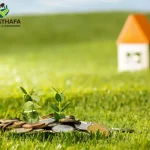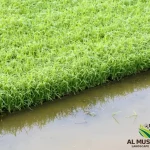If you live in Dubai and have artificial grass in your yard, you may be wondering how often you need to replace it. Synthetic turf has become increasingly popular in recent years, as it requires minimal maintenance and can look great all year round. However, even the highest quality artificial grass won’t last forever. In this article, we’ll explore some of the factors that can affect the lifespan of your synthetic turf, and answer the question: how often does artificial grass need replacing in Dubai?
Factors Affecting the Lifespan of Artificial Grass
There are several factors that can affect the lifespan of your artificial grass, including:
Quality of the Product
The quality of the artificial grass you purchase can have a significant impact on its lifespan. Higher-quality products are typically more durable and better able to withstand the harsh weather conditions in Dubai. Investing in a higher quality artificial grass product may cost more upfront, but it can save you money in the long run by lasting longer and requiring less maintenance.
Amount of Foot Traffic
Another factor that can impact the lifespan of your artificial grass is the amount of foot traffic it receives. If you have children or pets who frequently run around and play on the synthetic turf, it may wear out faster than if you have a more sedentary lifestyle. To prolong the lifespan of your artificial grass, try to limit the amount of foot traffic it receives, or consider installing additional pathways or walkways to reduce the wear and tear on the turf.
Climate and Weather Conditions
Dubai is known for its hot and sunny climate, which can be a double-edged sword when it comes to artificial grass. On one hand, synthetic turf is designed to withstand the sun’s UV rays and can actually be more durable in hot climates. On the other hand, extreme heat and dryness can cause the turf to shrink or become brittle, which can lead to cracks or tears. Additionally, sandstorms and other extreme weather conditions can damage the turf and reduce its lifespan.
How Often Should You Replace Your Artificial Grass?
The lifespan of your artificial grass can vary depending on the factors mentioned above. However, as a general rule of thumb, you should plan to replace your synthetic turf every 8-10 years. This timeframe may be shorter or longer depending on the quality of the product and the amount of foot traffic and weather conditions it experiences.
Signs That Your Artificial Grass Needs to Be Replaced
In addition to the general lifespan of the product, there are some specific signs that can indicate it’s time to replace your artificial grass. These include:
- Tears or cracks in the turf
- Bare spots where the turf has worn away
- Fading or discoloration due to sun exposure
- Unpleasant odors or buildup of debris
If you notice any of these signs, it’s a good idea to consider replacing your artificial grass sooner rather than later. Not only can worn-out turf detract from the aesthetic appeal of your yard, but it can also be a safety hazard for children and pets.
How to Extend the Lifespan of Your Artificial Grass
While the lifespan of your artificial grass is largely dependent on factors outside of your control, there are some steps you can take to help prolong its lifespan:
Regular Cleaning and Maintenance
Regular cleaning and maintenance can help keep your artificial grass looking great and functioning properly for years to come. Be sure to remove debris, leaves, and other materials that can get trapped in the fibers of the turf. You can also use a leaf blower to remove loose debris, or a hose to rinse away dirt and dust. It’s also a good idea to brush the fibers of the turf regularly, as this can help prevent matting and keep the grass looking lush and full.
Limit Foot Traffic
As mentioned earlier, foot traffic can be a major factor in the lifespan of your artificial grass. To reduce the wear and tear on your turf, try to limit the amount of foot traffic it receives. Consider installing pathways or walkways to direct foot traffic to specific areas of your yard, and discourage children and pets from running or playing on the turf.
Protect Against UV Rays
While synthetic turf is designed to withstand UV rays, prolonged exposure to direct sunlight can cause the fibers of the turf to break down and become brittle. To protect against UV rays, consider installing shade structures or using artificial turf that has been treated with UV inhibitors.
Consider Professional Installation
Finally, consider hiring a professional to install your artificial grass. While DIY installation may be tempting, it can lead to mistakes that can impact the lifespan of your turf. A professional installation can ensure that your turf is installed properly, with the right amount of drainage and a solid base that can help prevent damage and wear over time.
Conclusion
In conclusion, the lifespan of your artificial grass in Dubai can vary depending on a variety of factors, including the quality of the product, amount of foot traffic, and climate and weather conditions. As a general rule of thumb, you should plan to replace your synthetic turf every 8-10 years, but be on the lookout for signs of wear and tear that may require earlier replacement. By taking steps to maintain and protect your artificial grass, you can help ensure that it looks great and functions properly for years to come.



